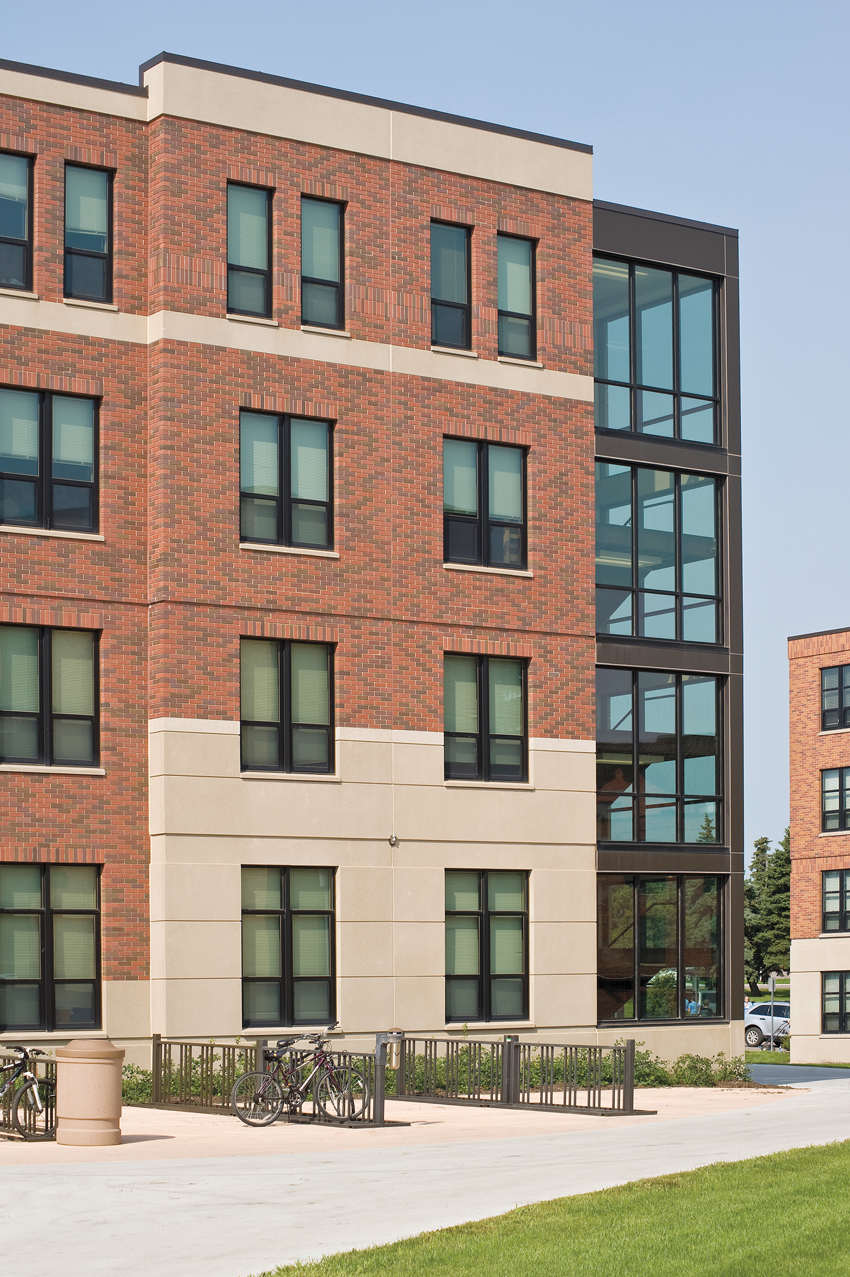Collaborating Through Design Challenges
Surveys Say…
In 2010, Longwood University released results from its “Student Housing Preference Survey,” published in Contemporary Issues in Education Research: “When asked to rank the most important consideration in choosing housing, ‘security’ was ranked first, followed by proximity to campus and cost. For a majority of respondents, a ‘deal breaker’ in the housing decision included: no Internet access (92.9 percent), no laundry facilities on premises (84.9 percent), no cable TV (75.7 percent), and no kitchen (57.4 percent). For approximately half of the respondents, sharing a bedroom was a ‘deal breaker’ (49.3 percent) as were twin beds (42.1 percent). Surprisingly, sharing a bathroom was only a deal breaker for 11.7 percent.”4
“Gauging Student Living Preferences,” a survey of 7,095 graduate and undergraduate students, was published and prepared for Multifamily Executive by Houston-based J Turner Research. Mirroring results from Longwood’s survey, J Turner Research found that apartment size is “a significant driver behind student housing decisions,” ranking as “extremely important” by 65 percent of survey respondents. A majority of students indicated a preference for a midrise building, a community cottage, or a townhouse. Only a small percentage of students (9 percent) indicated a preference for high-rise living. Students preferred either modern or traditional design, with few voicing support for funky or eclectic styles.11
Three trends appear from data evaluating college student preferences. All students are concerned with quality of life, life safety, and healthful amenities. Making these attributes a priority through housing design pays off for universities in both enrollment and longevity, and additionally brings benefits to the student body.
Students spend more than two-thirds (70 percent) of their time at college outside of the classroom.12 A yearlong study of 14 colleges researched on-campus involvement and sense of community among students. It found that “students who are actively involved in academic and out-of-class activities are better integrated into the academic and social life of the institution. Students are also more satisfied and more likely to graduate.”
Housing is ultimately where the bulk of student time will be spent, making it a vital place to encourage student development. “The ability of residence hall students to interact with other students is also one of the most important factors in predicting their overall satisfaction in residence halls.”13 Incorporating a mix of private and public areas, along with desired amenities, allows housing to make a powerful statement for the university and its mission.
Thoughtful Amenities Aid Student Satisfaction and Well-Being
While security and housing cost are important considerations for students, the “Longwood University Student Housing Survey” revealed the following top 10 amenities that are either “very important” or “somewhat important” to students.4
- Private bedroom (95.5%)
- On-site parking (92%)
- Double beds (91.3%)
- On-site laundry facilities (90.3%)
- Internet access (88.8%)
- Proximity to campus (73.3%)
- Fitness center (73.3%)
- Private bathroom (73%)
- Cable TV (56.4%)
- Satellite dining (50%)
J Turner Research recorded fitness centers as topping the list of common areas students report using, followed by study areas and computer labs. Other popular amenities included coffee shops/cyber cafés and theaters. Space for game rooms and bike storage ranked last.
Fitness centers again topped the list of most important community features, according to J Turner Research. Parking spaces and a pool or spa also were indicated as important amenities. Large dwelling units, in-unit washers and dryers, and storage space ranked as top considerations when choosing housing. Students also indicated the importance of walkability, with the majority surveyed, 37 percent, stating that “walking is the ideal mode of transport to and from campus.”11
While student desires certainly vary with each student, the themes of community, security, and amenities that are both healthful and tech savvy are consonant across campuses. With a majority of student time spent outside of the classroom, making sure housing facilitates livability and learning aids not just the university, but also the students themselves.

Photo courtesy Cipher Imaging/Brian J. Rotert
Mixed design elements combine effortlessly on the precast facade of Jackrabbit Grove.









